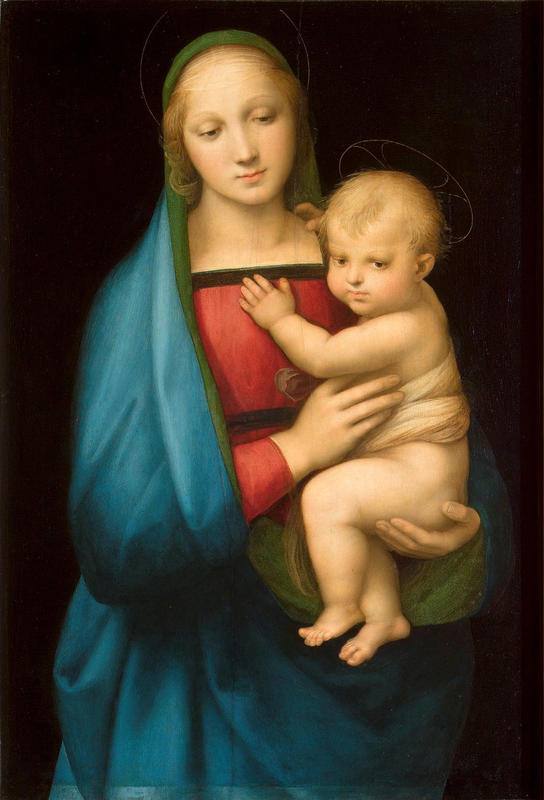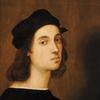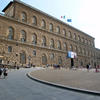More about Madonna del Granduca

Contributor
Nobody knows the original provenance of Raphael's Madonna del Granduca, but the Uffizi maintains a drawing which Raphael used as a study for this work.
It didn't even receive its current name until a couple of centuries after Raphael finished it, when Tommasso Puccini, the director of the Florentine galleries, tipped off the Grand Duke of Tuscany, Ferdinand III, of the House of Lorraine, and the Grand Duke struck while the iron was hot. Since then, we've been calling it the "Madonna of the Grand Duke." Naming conventions were different back then: the owners of a work, especially aristocratic ones, perhaps rightly, could get as much credit for maintaining a work as artists did for producing it. If I was around, I could've bought the Mona Lisa and renamed it the Mona Lisa del Shoshone. Oh, well. Coulda, woulda, shoulda. The first time, as far as we know, that anybody talked about this work was just after the Grand Duke bought it. Napoleon's posse blew up Ferdinand's spot, the block was hot, as it were, and the Grand Duke fled to a safehouse in Vienna.
Unemployed, the Grand Duke made sure to ship this work with him, along with his music collection and a whole heap of other prints. Because when you're between jobs, you gotta have your music, amirite? During his three years in Vienna, he sang bass and baritone parts in his music library, appreciating Raphael's painting of the Madonna and child. Almost three hundred years after this painting's composition, Vittorio Sampieri restored it radically, and its owners placed it in the Palazzo Pitti, the apartments of the Grand Duke of Tuscany, where it resides today. Sampieri's restoration may have changed the entire look of the work, including the background, which, x-rays reveal, once included an arched window.
Raphael's friends and acquaintances knew him as a pretty chill dude, and, apart from the shade of his rival, Sebastiano del Piombo, everybody had good things to say about him. When he arrived in Florence the same year as this work, for example, he was armed with a glowing letter, from Giovanna della Rovere, the Duchess of Sora, to the Gonfaloniere (communal leader) of Florence, Pier Soderini, describing him as "discreto, e gentile giovane," a considerate and mild-mannered young man.
Sources
- Alcorn, Crichton. Raphael: 118 Paintings. Self-published, 2014.
- Fischel, Oskar. Revival: Raphael (1948): Volume 1. London: Routledge, 2018.
- Franzese, Paolo. Raffaello. Milano: Mondadori Arte, 2008.
- Hall, Marcia B. The Cambridge Companion to Raphael. Cambridge: Cambridge University Press, 2005.
- McCurdy, Edward. Raphael Santi. London: Hodder and Stoughton, 1917.
- De Vecchi, Pierluigi. Raffaello. Milano: Rizzoli, 1975.
- Vivenot, Alfred Ritter von. Vertrauliche Briefe des Freiherrn von Thugut. Vienna: W. Braumüller, 1872.
Featured Content
Here is what Wikipedia says about Madonna del Granduca
The Madonna del Granduca is a Madonna painting by the Italian renaissance artist Raphael. It was probably painted in 1505, shortly after Raphael had arrived in Florence. The influence of Leonardo da Vinci, whose works he got to know there, can be seen in the use of sfumato. The painting belonged to Ferdinand III, Grand Duke of Tuscany, from whom it got its name.

Check out the full Wikipedia article about Madonna del Granduca












